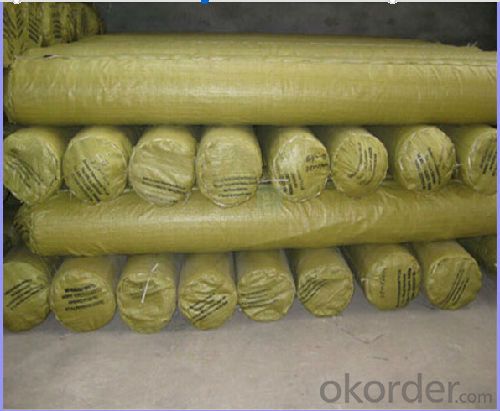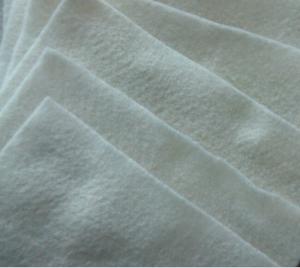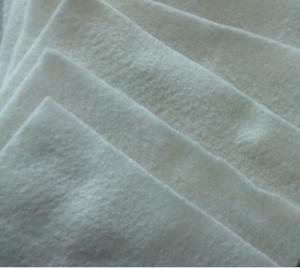PP Nonwoven Geotextile with High Strength Used for Road Contruction and Civil Engineering Projects
- Loading Port:
- Qingdao
- Payment Terms:
- TT or LC
- Min Order Qty:
- 5000 m²
- Supply Capability:
- 120000 m²/month
OKorder Service Pledge
OKorder Financial Service
You Might Also Like
PP/PET Needle Punched Short Fiber Nonwoven Geotextile for Road Construction
1. Specifications for PP/PET Needle Punched Short Fiber Nonwoven Geotextile for Road Construction
Material | PP(polypropylene) or PET(polyester) |
Technics/process | Needle punched / thermally bonded |
Specification | 100g/m-1300g/m2 |
Width | 1m6m(as you demand) |
Length | 100m(as you demand) |
Colour | White, black |
Packing | PE film and woven cloth |
Load | According to your specification |
Payment terms | T/T or L/C |
Delivery time | Within 3 weeks |
Application | Geotextiles with various indicators of quality, with good stress -- strain and toughness, seepage performance and uniformity, and width, etc., And is applicable to roads, water, rail, mining dams, rivers, airports and other civil engineering, anyone in the works played reinforcement, segregation, filtration, filtration, drainage, and then extend the project life, reduced cost and easy construction, and it is easy to ensure the quality of the project. |
2. Property for PP/PET Needle Punched Short Fiber Nonwoven Geotextile for Road Construction
1). Good air and water permeability-interspace in the fibers made it favorable water permeability.
2). Corrosion resistant-geotextile is made from polyester, featuring resistance to acid and alkali ,non-corroding,no worm-eaten,anti-oxidation.
3). Good water transmissibility and filtration- it can form drainage channels inside soil mass to drain redundant water and air out of the soil mass.
4). High intensity-geotextile can keep sufficient strength and elongation in dry and wet condition due to the use of plastic fiber.
5). Easy construction,low weight,easy operation,simple construction
3. Property for PP/PET Needle Punched Short Fiber Nonwoven Geotextile for Road Construction
1). Isolation
Short fiber needle punched geotextile can prevent the mixture of construction
materials featuring different physical properties (such as soil mass and sandstone,soil mass and concrete)
2). Filtration
Its good water and air permeability let water flow through it so as to effectively control
sandrock running down.
3). Reinforcement
Geotextile helps to enhance the soil mass tensile strength and non-deformability and structural stability so as to improve soil mass quality.
4). Protection
It can effectively make the concentrated stress diffuse,transfer or decompound,and guard the soil mass against the destruction of external force.
5). Anti-puncture
Combine with geomembrane and form compound waterproofing material to act a part of anti-puncture.
4. Photos for PP/PET Needle Punched Short Fiber Nonwoven Geotextile for Road Construction


- Q:What are the installation guidelines for geotextiles used in erosion control blankets?
- The installation guidelines for geotextiles used in erosion control blankets typically involve the following steps: 1. Site preparation: Ensure that the area where the erosion control blanket will be installed is properly graded and free of any debris or vegetation. 2. Unroll the geotextile: Start by unrolling the geotextile fabric along the slope or area where erosion control is needed. Make sure to overlap the fabric by the specified amount to ensure complete coverage. 3. Secure the fabric: Use stakes or landscape pins to secure the geotextile to the ground, especially at the edges and corners. This will prevent it from shifting or being displaced during installation or heavy rainfall. 4. Seam connection: If multiple rolls of geotextile fabric are required, ensure that they are properly overlapped and securely connected using a recommended seam connection method. This will ensure a continuous and seamless coverage. 5. Anchoring: In certain cases, additional anchoring may be required to provide extra stability. This can include using sandbags, rocks, or other suitable materials along the edges or across the surface of the geotextile fabric. 6. Vegetative cover: If the erosion control blanket is designed to support vegetation growth, follow the recommended guidelines for seed or plant installation. This may involve spreading seeds or planting live vegetation through the geotextile fabric. It is important to note that these guidelines may vary depending on the specific erosion control blanket and geotextile manufacturer, as well as the site and project requirements. It is always recommended to refer to the manufacturer's installation instructions and consult with a professional engineer or erosion control specialist for proper installation and best results.
- Q:Can geotextiles be used in erosion control in coastal bluff stabilization?
- Yes, geotextiles can be used in erosion control in coastal bluff stabilization. Geotextiles are commonly employed to reinforce and stabilize slopes, including coastal bluffs, by preventing soil erosion and promoting vegetation growth. They are effective in reducing surface runoff and controlling sediment movement, thus providing stability to coastal bluffs and preventing further erosion.
- Q:Can geotextiles be used in erosion control on riverbanks?
- Yes, geotextiles can be used in erosion control on riverbanks. Geotextiles are often used as a stabilization measure to prevent soil erosion by providing a barrier against water flow and supporting vegetation growth. They help to retain soil while allowing water to pass through, reducing the impact of flowing water on riverbanks and preventing further erosion.
- Q:How do geotextiles help in reducing the risk of soil liquefaction?
- Geotextiles help in reducing the risk of soil liquefaction by providing reinforcement and stabilizing the soil. They act as a barrier to prevent the movement of water within the soil, reducing the buildup of excess pore water pressure. This pressure is a major factor contributing to soil liquefaction during earthquakes. By promoting drainage and improving soil strength, geotextiles help to mitigate the potential for liquefaction and increase the overall stability of the soil.
- Q:How are geotextiles tested for permeability?
- Geotextiles are tested for permeability through various methods, such as the constant head test, falling head test, and the gradient ratio test. These tests involve measuring the flow of water through the geotextile under controlled conditions to determine its permeability properties.
- Q:What are the key considerations for geotextile installation in high wind areas?
- The key considerations for geotextile installation in high wind areas include selecting a high-strength geotextile material, ensuring proper anchoring and securing methods, evaluating the site's wind load potential, and implementing effective quality control measures to ensure the installation's durability and long-term performance.
- Q:What are the different design considerations for geotextile applications?
- Some of the different design considerations for geotextile applications include the type and strength of the geotextile material, its permeability and filtration characteristics, its durability and resistance to degradation, the required tensile strength and elongation properties, as well as its installation and maintenance requirements. Other factors to consider include the anticipated loadings and stresses on the geotextile, the expected lifespan of the application, and any specific project requirements or environmental considerations.
- Q:Can the geotextile function be a filter?
- Hello, geotextile is the most important role is to filter, some of the above works of water filter material is mainly used geotextile, geotextile price is relatively low, relatively high tensile strength, can play a filtering effect. Zhongrui geotech Zhang Mingchao answer for you.
- Q:How do geotextiles help with load distribution in pavement systems?
- Geotextiles help with load distribution in pavement systems by creating a stable and uniform base layer. They distribute the load from vehicles and heavy traffic across a wider area, reducing the stress on the underlying soil. This prevents the formation of potholes, cracks, and other pavement failures, leading to improved durability and longer lifespan of the pavement system.
- Q:Geotextile (250g / square meter) offer
- 250 grams of short fiber geotextile Price: 2.30 yuan / square meter 250 grams of filament geotextile Price: 3.70 yuan / square meter 250 grams of impervious geotextile Price: 2.80 yuan / square meter.
1. Manufacturer Overview |
|
|---|---|
| Location | 示范:Hebei, China |
| Year Established | 示范:1997 |
| Annual Output Value | 示范:Above US$50 Million |
| Main Markets | 30.00% South America; 20.00% North America; 15.00% Eastern Europe; 15.00% Southeast Asia; 10.00% South Asia; 5.00% Southern Europe; 5.00% Africa |
| Company Certifications | ISO 9001:2008 |
2. Manufacturer Certificates |
|
|---|---|
| a) Certification Name | |
| Range | |
| Reference | |
| Validity Period | |
3. Manufacturer Capability |
|
|---|---|
| a)Trade Capacity | |
| Nearest Port | Tianjin;Qingdao;Shanghai |
| Export Percentage | |
| No.of Employees in Trade Department | 21-50 People |
| Language Spoken: | English;Chinese |
| b)Factory Information | |
| Factory Size: | Above 100,000 square meters |
| No. of Production Lines | Above 12 |
| Contract Manufacturing | OEM Service Offered;Design Service Offered |
| Product Price Range | High;Average |
Send your message to us
PP Nonwoven Geotextile with High Strength Used for Road Contruction and Civil Engineering Projects
- Loading Port:
- Qingdao
- Payment Terms:
- TT or LC
- Min Order Qty:
- 5000 m²
- Supply Capability:
- 120000 m²/month
OKorder Service Pledge
OKorder Financial Service
Similar products
New products
Hot products
Related keywords

































